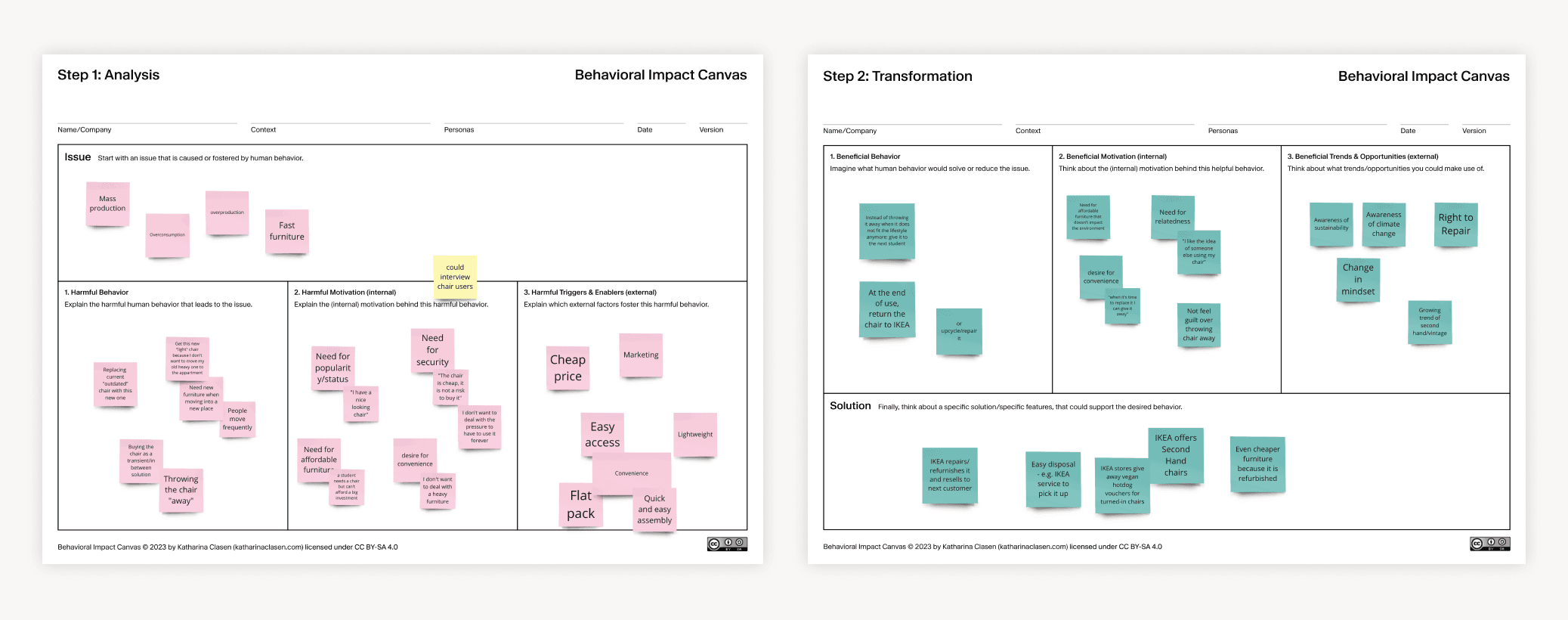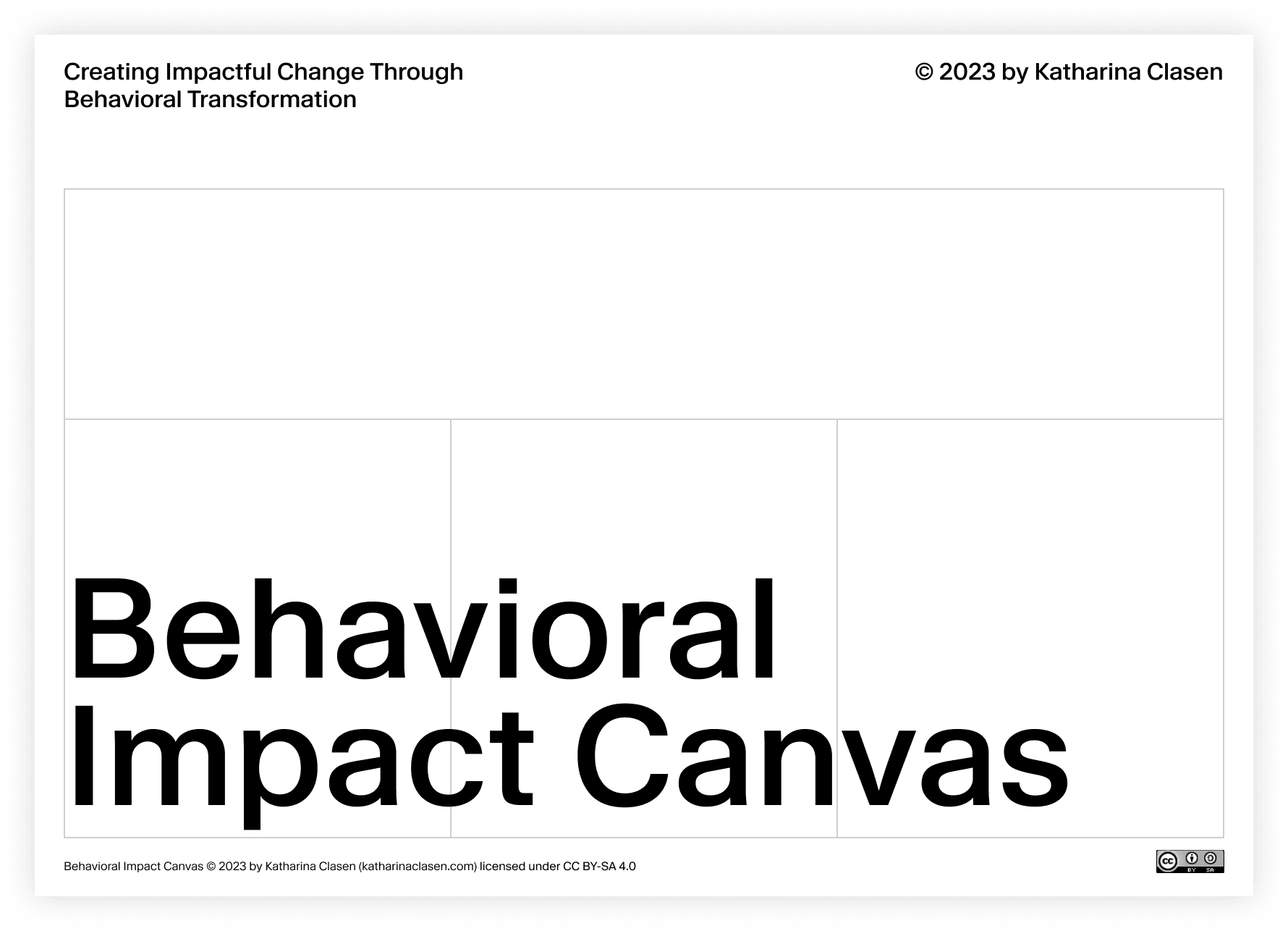Creating impactful change through behavioral transformation
The Behavioral Impact Canvas is a versatile tool designed to empower change-makers of all kinds to address intricate environmental and social challenges by systematically analyzing and transforming human behavior.
Why this tool matters
Many of the complex issues we face today can be traced back to human behavior. By understanding and transforming behavior, we can create meaningful solutions that address the root causes of these challenges.
Methodology
The Behavioral Impact Canvas comprises two core steps: Analysis and Transformation.
Step 1: Analysis
In this phase, we dissect the issue, linking it to harmful behavior, motivations, and external triggers.
Users detail:
- The issue and its impact.
- Harmful behavior causing the issue.
- Internal motivations and external factors contributing to the behavior.
This analysis phase aims to uncover the problem's root causes.
Step 2: Transformation
In this phase, we focus on envisioning beneficial behaviors and finding solutions that support them.
Users:
- Explore potential behaviors and motivations.
- Identify trends and opportunities in the external environment.
- Consider specific solutions to support desired behaviors.
Background
As a UX Designer, my daily work revolves around understanding human needs and how they drive behavior. As I explored the concept of Life-centered Design, I sought to bridge my UX practice with a broader perspective. This led to the creation of the Behavioral Impact Canvas, a tool aimed at leveraging our knowledge of behavioral design to cultivate positive human behavior and ultimately, enhance products, services, and systems.
One pivotal idea that motivated this endeavor echoes the words of Helne and Hirvilammi (2019):
Even though needs are non-substitutable, unsustainable satisfiers can be replaced with better alternatives.
Sadly, I wasn't aware of their work when I created the first version of the canvas. Nevertheless, this philosophy prompts a fundamental question the canvas is based on: Must we accept the harm caused by our current methods of satisfying needs, or can we pivot towards more sustainable alternatives while still meeting those needs?
The canvas has evolved significantly since the intital version, undergoing refinement through application in several projects. Initially developed for my lectures, it has been put to the test by students over eight semesters. The tool's journey culminated in the current version, accessible for free on this website.

Most recently, it was employed in a workshop within our Life-centered Design Collective, where we applied it to a fictional project involving the redesign of the IKEA Poäng chair. Renowned experts Estela Duhart and Dr. Martin Tomitsch participated in the workshop, and Damien Lutz explored and tested the tool individually, without facilitation.

Testimonials
This tool felt inspiring in regards to brainstorming root causes of behaviours. With enough time invested for both brainstorming and researching the trends, this tool could generate quality ideas as starting points for deeper investigation.
Damien Lutz (2023), author of "The Life-centred Design Guide" and "The Non-human Persona Guide"
The Behavioral Impact Canvas is a great tool to think structurally and creatively about transforming exisiting behaviours into preferred future ones. A great tool to use in design projects and for teaching about design.
Dr. Martin Tomitsch (2023), Professor and Head of the TD School, author of "Designing Tomorrow"
Finally
You will find the license information, instructions, and other helpful sidenotes within the document.
Please reach out to me if you have any questions regarding this tool or if you'd like to share your experiences with it.
